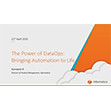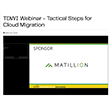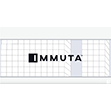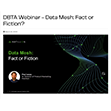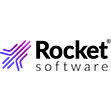
Agentic AI Orchestration Layer Should be Independent, Dataiku CEO Says

(TechnoVectors/ Shutterstock)
We’re still early in the agentic AI game, but a few things are becoming clear: Customers will not tolerate lock in either at the data or AI level, and coordination of agents with unified governance will be necessary. For Dataiku CEO and Co-founder Florian Douetteau, the emerging needs resemble a data orchestration layer that his company is building.
Since it was founded in 2013, Dataiku has been seeking to enable users to more easily build data products. In the early days, the company rallied around the cause of data science and advanced analytics. More recently, the organizing principle has been generative AI and agentic AI.
During the recent Snowflake Summit in San Francisco, BigDATAwire caught up with Dataiku to get an update on the company’s activities. As Douetteau explained, the pace of innovation in the AI world is simultaneously exciting and potentially lucrative as new needs emerge.
The three big public cloud platforms and other data platform providers, like Snowflake, Databricks, Salesforce, ServiceNow, and Workday are all enabling customers to build AI agents that run on their platforms and work with customer data that resides there, Douetteau notes. But AI agents developed by these data platform providers won’t necessarily be able to work in outside environments, which is where Dataiku comes in.
“We see this gap in the market,” Douetteau said. “Theoretically, you can build agents on the data platforms to query the data platforms themselves, which is great. But many interesting applications are at the nexus of combining everything together and multi steps, and doing complex things.”
Much of the data infrastructure that enterprises need to build agentic AI systems is already in place, or can be readily spun up in the cloud. This stack resembles an operating system for AI, and includes vast object storage, real-time data integration, an application level database like Postgres, and a vector database to power RAG workloads, not to mention the computational and networking requirements.
“To create the value in the enterprise, you need also to enable people in the business to cobble things together in order to create the necessary basic artifacts for application and agents,” he said. “Those things are pretty much required to fill the layer between the core OS and data.”
But agentic AI requires another layer that isn’t readily available on AWS, Azure, or Google Cloud, or those other vendors, Douetteau said. In addition to developing an AI agent, you need to be able to manage the lifecycle of the agent, which means testing, deploying, monitoring, and reporting on the agents, he said.
Ideally, the tools for developing, testing, deploying, monitoring, and reporting on AI models aren’t something that developers have to cobble together themselves, which would create needless pain for customers, Douetteau said. Governance, security, and auditability are improved when this particular layer of the stack is standardized with one set of tools, he said.
“Ideally you want it to be tightly integrated instead of having five tools–one to copy all the data together, one to define business tools in a collaborative manner, one to evaluate an agent, one to design an agent, one to manage the security of your tool set and those frameworks,” Douetteau said.
Douetteau foresees enterprises building AI agents to handle a range of tasks, whether it’s handling an insurance claim or optimizing the restocking of a warehouse. Some agents will be trained to handle very specific tasks, whereas other agents will function more like coordinators. The chain of command will look like a tree, with branches and AI agents (or leaves) at the end.
Getting these complex agentic environments to work smoothly will be difficult, but it will be easier with an orchestration layer in place that has proven technology at its core.
“[That] is why you need orchestration,” Douetteau said. “Even when you’re building complex agents, at the end of the day, usually there is one part in the middle, which is pretty much a good old rule-based system, or a good old predictive model, because you need those things where you have some guarantees of how they work. You want to make sure that this is the piece of code being used to make the actual decision, not an LLM.”
Having an orchestration layer that is naturally independent allows customers to build agents that work with any data, no matter where it resides.
“Our vision is that ultimately we want to be the easy-to-use AI workbench, the place where people that are analysts in the business can go to in order to build a new data product by themselves without having to call data scientists,” Douetteau says.
Related Items:
Dataiku Launches GenAI Real-Time Cost Monitoring Solution
Dataiku Nabs $400 Million in Quest to Democratize AI

















